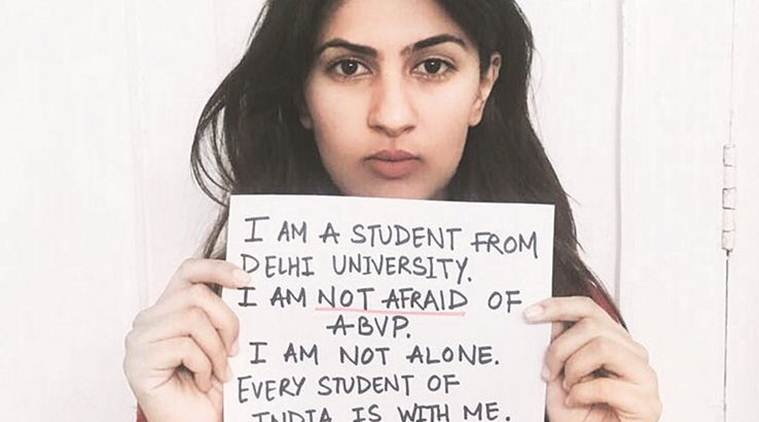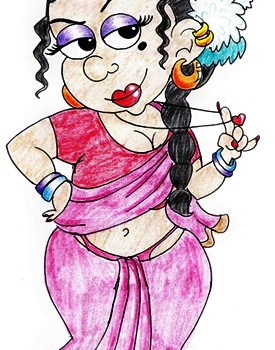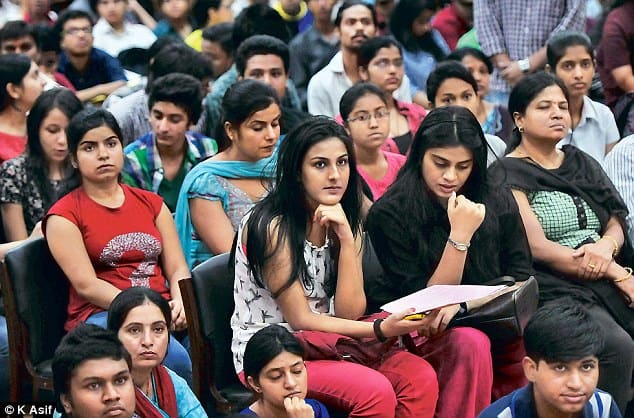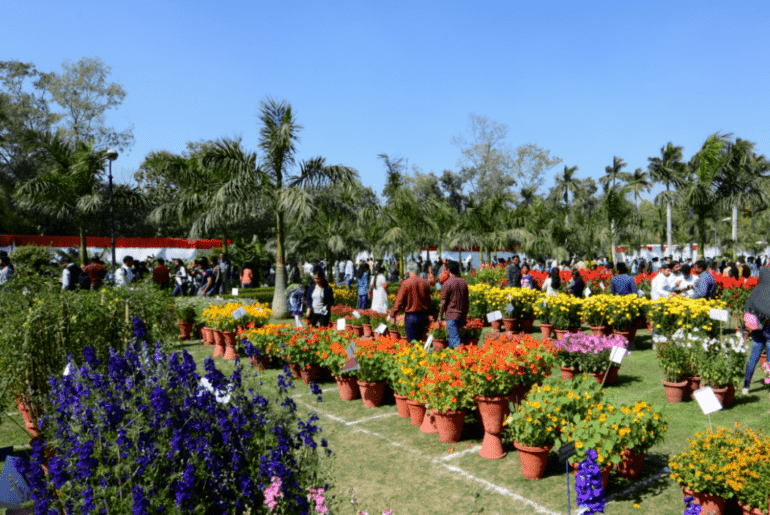The DU Student who began the ‘Students Against ABVP’ campaign has become the subject of memes and jokes online, after an old video resurfaced the social media.
The events of 21st and 22nd February, 2017, have sparked a fire in hearts of students and teachers who had been directly, and indirectly, wronged. The source of this fire can be traced back to the events in Ramjas College, University of Delhi, where the English Department had organised a two-day seminar on ‘Cultures of Protest,’ inviting Umar Khalid and Shehla Rashid Shora. The former speaker, Khalid, was to give a segment on “The War in Adivasi Area,” a session which could not be transcended to reality due to safety concerns. The Akhil Bharatiya Vidyarthi Parishad (ABVP) disrupted the conference with violence soon after, for the two JNU speakers were the “anti-national element” in the campus which could not be permitted to deliver. A peaceful protest broke out the same day and the next to stand against the viciousness of ABVP which targeted teachers and students alike.
As the varsity split into chaos and patriot wars, a student of Lady Shri Ram College, University of Delhi, Gurmehar Kaur had to give way to her stifled voice. The brutal attacks on her friends and the incessant supply of rape threats to the protestors demanded an action out of her; one which would be joined by students all across the campus. With a caption on a placard reading, “I am a student from Delhi University. I am not afraid of ABVP. I am not alone. Every student of India is with me. #StudentsAgainstABVP,” the social media campaign against ‘ABVP’s hooliganism’ garnered recognition and support from all corners. The domino effect had begun; people changed their display pictures on Facebook with a similar caption in protest of the violence propagated by the student-wing. As ideal and effective the internet space is desired by us, it also paves the way to brute remarks and threats of extreme degree. What thus began was not an exchange of dialogue to facilitate debate and discussion of ‘ideologies,’ but far from it, a cycle of online trolling attacking all individual aspects to deter spirits.
Gurmehar Kaur is the daughter of a Kargil martyr and had previously posted a video on social media alluding to the ideals of war and the stereotypes against Muslims and Pakistan, commenting, “Pakistan did not kill my father. War did.” The objective of the video was to accentuate the notions of peace between the two countries and highlight her struggle after her father’s death. A brief statement in an otherwise lengthy video, this became the foundation for online bullying. Memes and jokes relating Kaur to the likes of Dawood Ibrahim began to surface on the internet. The comparison was brought forward by a BJP MP, Pratap Simha, who along with other ministers claimed that the young mind is being manipulated by a political propaganda and are mere ‘pawns.’ This was escalated by the former cricketer Virender Sehwag’s picture with the caption, “I didn’t score two triple centuries, my bat did” and was supported by the actor, Randeep Hooda with a comment on Twitter.
Bat me hai Dum !#BharatJaisiJagahNahi pic.twitter.com/BNaO1LBHLH
— Virender Sehwag (@virendersehwag) February 26, 2017
Wrestler Babita Phougat joined in when Rana Ayyub urged her to take a stand for Kaur, she responded by saying, “Is it right to talk in favour of someone who doesn’t favour her own nation?”
Jo aapne desh ke haq m bat nhi kar sakti uske haq m bat karna thik h kya??? https://t.co/t4Xb0AELHi
— Babita Phogat (@BabitaPhogat) February 27, 2017
On February 28th, wrestler Yogeshwar Dutt added fuel to the mockery by posting a meme which seeks to draw an analogy between Kaur’s post, a black buck, Adolf Hitler, and Osama Bin Laden.
??? pic.twitter.com/SiH90ouWee
— Yogeshwar Dutt (@DuttYogi) February 28, 2017
In a country which harbours an overwhelming fascination towards the members of the acting and sports fraternity, a mockery from these sects would be resonated by a large section of the society which idealises these entities. The posting of the picture and sharing memes reduce the message of Kaur’s campaign which demands freedom of speech and shifts the onus to an India-Pakistan nationalist debate, making her susceptible to social media abuse and other serious ramifications. Kaur has been receiving increasing rape threats since, as if the rhetoric of threatening rape is synonymous to the degree of divergence. She had filed a FIR with the police and brought her concerns forward to the Delhi Commission for Women.
After days of receiving flak, being termed as an anti-nationalist, and being on the receiving end of inhumane threats, Kaur has withdrawn from the campaign after a post on Facebook saying that “the campaign was never about me but the students,” and “To anyone questioning my courage and bravery, I have shown enough.” The 20-year college student began this campaign with a simple idea of standing against the injustice faced by the college fraternity and has successfully propagated a message of solidarity.
Saumya Kalia
[email protected]
Image credits: Indian Express









